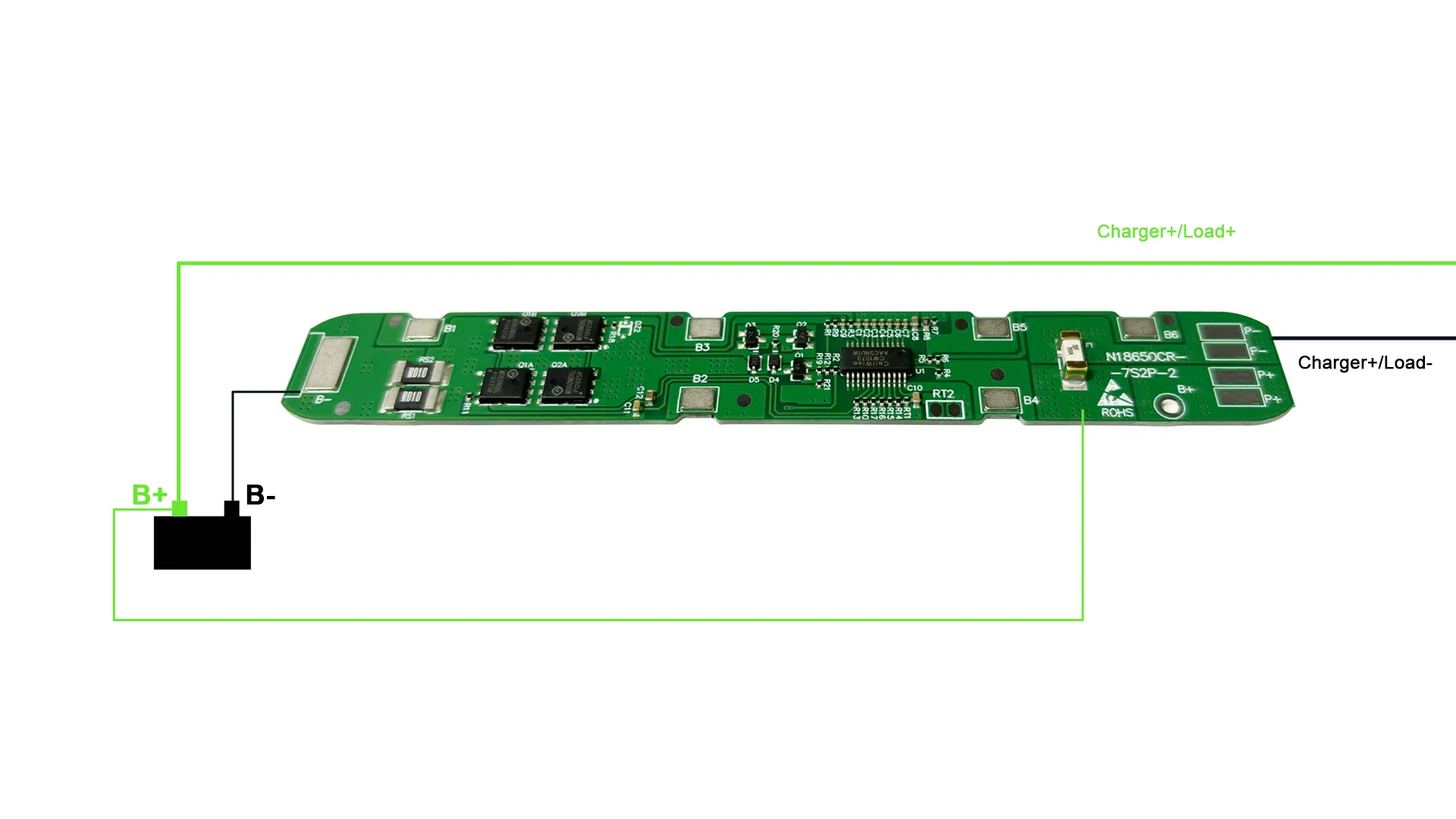PCM for 18650-7S2P

- Short-Circuit Protection – A safety mechanism that disconnects the circuit when an abnormal low-resistance path (short) is detected, preventing excessive current and potential damage.
- Charging Passive Balancing – A method to equalize cell voltages in multi-cell batteries by dissipating excess energy from higher-voltage cells (e.g., via resistors) during charging.
- Overcurrent Protection – Limits current flow when it exceeds a safe threshold, preventing overheating or damage.
- Overcharge Protection – Stops charging when battery voltage exceeds a set limit (e.g., 4.25V–4.30V for Li-ion) to avoid structural damage or safety risks.
- Overdischarge Protection – Cuts off discharge when voltage drops too low (e.g., <2.3V–2.9V), preventing irreversible damage to the battery.

- Short-Circuit Protection – A safety mechanism that disconnects the circuit when an abnormal low-resistance path (short) is detected, preventing excessive current and potential damage.
- Charging Passive Balancing – A method to equalize cell voltages in multi-cell batteries by dissipating excess energy from higher-voltage cells (e.g., via resistors) during charging.
- Overcurrent Protection – Limits current flow when it exceeds a safe threshold, preventing overheating or damage.
- Overcharge Protection – Stops charging when battery voltage exceeds a set limit (e.g., 4.25V–4.30V for Li-ion) to avoid structural damage or safety risks.
- Overdischarge Protection – Cuts off discharge when voltage drops too low (e.g., <2.3V–2.9V), preventing irreversible damage to the battery.



